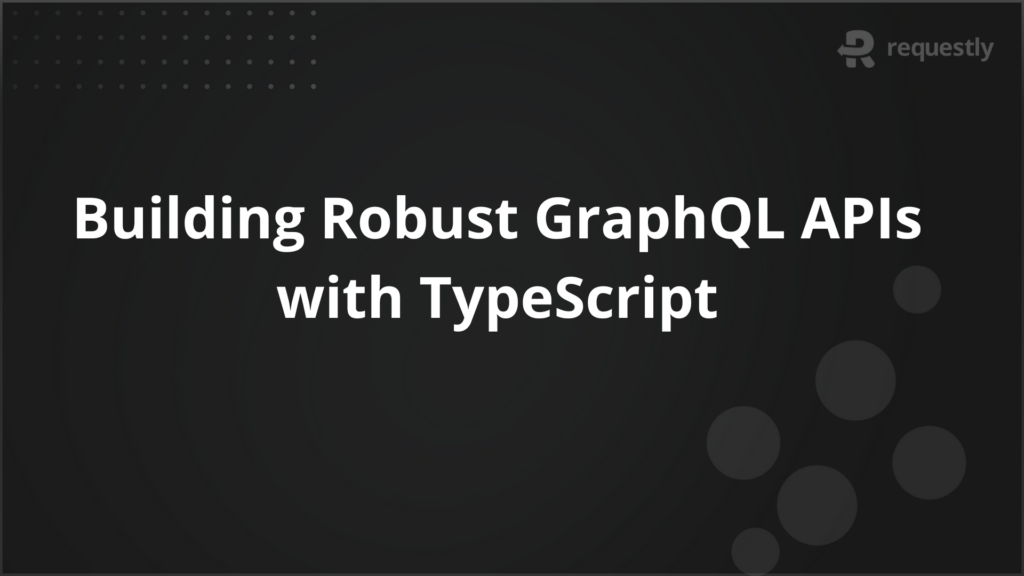Understanding the ETag Header for APIs

The ETag header is a crucial component in modern API development, providing mechanisms for cache validation and concurrency control. Understanding how ETags work and how to implement them effectively can significantly improve API performance and ensure data consistency in distributed systems.
This article explores the fundamentals of the ETag header, its practical applications, and best practices for integrating it into RESTful APIs.
What is an ETag Header?
The ETag (Entity Tag) header is an HTTP response header that acts as a unique identifier for a specific version of a resource represented by a URL. It allows web servers and clients to efficiently manage resource caching by validating if the resource has changed since the last access, thereby reducing unnecessary data transfer and bandwidth use.
When a client requests a resource, the server responds with the resource data along with an ETag header. This ETag value is typically a hash or version identifier computed based on the resource’s content or last modification. If the resource changes, a new ETag value is generated.
Clients can then use this ETag value in subsequent requests to ask the server if the resource has changed using the If-None-Match header. The server compares the client’s ETag with the current one and responds with a 304 Not Modified status if the resource is unchanged, allowing the client to use the cached version without re-downloading the full resource.
Example of an ETag header in server response:
ETag: "33a64df551425fcc55e4d42a148795d9f25f89d4"
Workflow:
- Client requests a resource.
- Server responds with the resource and ETag: “v1.0”.
- Client caches the resource and its ETag.
- Later, client requests the resource again with header: If-None-Match: “v1.0”.
- If resource unchanged, server responds with status 304 Not Modified (no body).
- If resource changed, server sends updated resource and new ETag, e.g., ETag: “v1.1”.
This mechanism optimizes network performance and helps manage concurrent updates safely
How to Use the ETag Header in APIs
Using the ETag header in APIs involves generating and sending a unique identifier for the current version of a resource whenever it is requested. This identifier helps clients determine if the resource has changed since their last access, enabling optimized caching and concurrency handling.
Steps for using ETag header in APIs:
Follow the steps below to use ETag header in APIs:
1. Generate the ETag on the server:
The server creates an ETag value for a resource, typically by hashing the resource’s content, using a version number, or a timestamp representing its last modification. This ETag is included in the HTTP response header as:
ETag: "unique-resource-version-id"
2. Send the ETag with the response:
Every time the server responds to a GET request for the resource, it includes the current ETag value in the response headers.
3. Client caches the resource and ETag:
The client stores the resource data along with the ETag for future validation.
4. Conditional requests with ETag:
When the client requests the resource again, it includes the ETag in the If-None-Match header:
If-None-Match: "unique-resource-version-id"
5. Server validates the ETag:
- If the ETag matches the current resource version, the server returns a 304 Not Modified status without the response body, telling the client to use its cached data.
- If the ETag does not match (resource has changed), the server returns a 200 OK response with the updated resource and the new ETag.
Example HTTP exchange:
To better illustrate how ETag headers facilitate efficient caching and conditional requests, consider the following example of an HTTP exchange between a client and a server.
Initial response from server:
HTTP/1.1 200 OK
ETag: "v1.0"
Content-Type: application/json
{ "id": 1, "name": "Product A", "price": 100 }
Client makes conditional GET with ETag:
GET /api/products/1 HTTP/1.1
If-None-Match: "v1.0"
Server responds with if unchanged:
HTTP/1.1 304 Not Modified
Or, if changed:
HTTP/1.1 200 OK
ETag: "v1.1"
Content-Type: application/json
{ "id": 1, "name": "Product A", "price": 110 }
Using ETags effectively reduces bandwidth consumption, improves performance, and safeguards resource consistency in RESTful APIs.
Implementation of ETag in REST APIs
Implementing ETag support in REST APIs involves generating a unique version identifier for each resource and using it to handle cache validation and concurrency control. The core idea is to send an ETag header with the resource response, allowing clients to perform conditional requests based on that tag.
1. Generating the ETag
The ETag can be generated as a hash of the resource’s content, a version number, timestamp, or other unique versioning method that changes whenever the resource updates. Strong ETags typically use a content hash to reflect any meaningful change, while weak ETags can tolerate minor or semantic changes.
2. Including the ETag in API responses
The ETag value is included as a response header:
text
ETag: "resource-version-id"
This tells the client the current version of the resource.
3. Conditional requests handling
When the client sends requests with If-None-Match or If-Match headers containing the ETag, the server uses this to decide whether to:
- Respond with 304 Not Modified if the resource is unchanged (saving bandwidth by not sending the full response).
- Process and return the updated resource with a new ETag header.
4. Framework support for ETag implementation
Many frameworks provide built-in mechanisms for ETags:
- Spring Framework: Use ShallowEtagHeaderFilter for automatic ETag generation based on the response body. The ResponseEntity class supports custom ETags via .eTag() method, useful for optimistic locking based on resource version.
- Node.js/Express: Middleware libraries exist that can calculate and handle ETags automatically.
- Other platforms: Most HTTP/REST libraries/frameworks offer easy integration or extension points for ETag support.
5. Testing ETag functionality:
- Verify that the ETag header is returned with resource retrieval responses.
- Test conditional GETs using the If-None-Match header to confirm the server returns 304 Not Modified.
- Test updates to ensure new ETags are generated and the server returns full updated responses when the resource has changed.
Example in Spring Boot (Java):
java
@GetMapping("/resource/{id}")
public ResponseEntity<Resource> getResource(@PathVariable String id) {
Resource resource = resourceService.findById(id);
String etag = Integer.toString(resource.hashCode()); // Simple hash for demonstration
return ResponseEntity.ok()
.eTag(etag)
.body(resource);
}
This example shows generating an ETag from the resource’s hash code and returning it in the response header with the resource data.
By adopting ETag support in REST APIs, developers can optimize client-server interactions, reduce bandwidth, and implement robust concurrency control for resource updates.
Benefits of Using ETags
ETags provide multiple significant benefits in API design and web performance optimization:
- Efficient Caching and Reduced Bandwidth: ETags enable conditional GET requests, allowing clients to verify if a cached resource is still current. If the resource hasn’t changed, the server responds with a 304 Not Modified status without resending the full data, saving bandwidth and reducing unnecessary network traffic.
- Improved API Performance: By minimizing the amount of data transferred, ETags reduce server load and speed up response times, providing a better user experience with faster content delivery.
- Optimistic Concurrency Control: ETags can be used with headers like If-Match to prevent simultaneous updates from overwriting each other. This safeguards data integrity by ensuring updates only proceed if the resource version matches the client’s latest known state.
- Accurate Cache Validation: Unlike time-based cache expiration, ETags provide precise validation by tying the identifier directly to the resource’s content version, reducing stale data usage.
- Reduced Server Load: When servers respond with 304 Not Modified, they avoid rebuilding and retransmitting resource data, optimizing resource utilization and scalability.
- Better User Experience: Faster response times and reduced data transfer lead to smooth and efficient user interactions with APIs, especially critical for mobile and low-bandwidth environments.
Enhancing ETag Usage with Requestly HTTP Interceptor
Requestly HTTP Interceptor is a powerful tool that enhances the way developers work with ETag headers during API development and testing. It enables real-time interception, modification, and debugging of HTTP requests and responses directly within the browser, without requiring changes to backend code.
Key ways Requestly enhances ETag usage include:
- Modify and Inject ETag-Related Headers: Developers can dynamically add, replace, or remove headers like If-None-Match or ETag on outgoing requests and incoming responses. This allows easy testing of different cache validation and conditional request scenarios.
- Simulate Server Responses: Requestly enables mocking or overriding API responses, including response status codes such as 304 Not Modified. This helps verify client-side handling of ETag-based caching mechanisms without needing actual server changes.
- Debug and Troubleshoot Efficiently: By inspecting and manipulating HTTP headers on the fly, developers can better understand how their applications interact with ETags, identify caching issues, and optimize API behavior.
- No Code Changes Needed: This tool works externally, making it ideal for teams that want to test or debug APIs while preserving production environments intact.
- Streamline Cache Validation Testing: By modifying If-None-Match or other conditional headers, Requestly simplifies testing refresh logic and prevents downloading unchanged data during development.
Requestly complements server-side ETag implementation by providing flexible, headache-free client-side control over HTTP headers and responses, improving development workflows, testing accuracy, and API reliability.
Conclusion
ETags are an essential component in modern RESTful API design, offering powerful mechanisms for efficient caching, bandwidth optimization, and concurrency control.
By uniquely identifying resource versions, ETags enable clients and servers to communicate changes precisely, reducing unnecessary data transfers and improving response times. Implementing ETags not only enhances API performance but also helps maintain data consistency in concurrent environments.
Furthermore, tools like Requestly HTTP Interceptor amplify the practical utility of ETags by facilitating easy testing, debugging, and modification of HTTP headers during development. Incorporating ETags thoughtfully results in more scalable, reliable, and performant APIs that deliver a better experience for both developers and end users.

Contents
Subscribe for latest updates
Share this article
Related posts




















